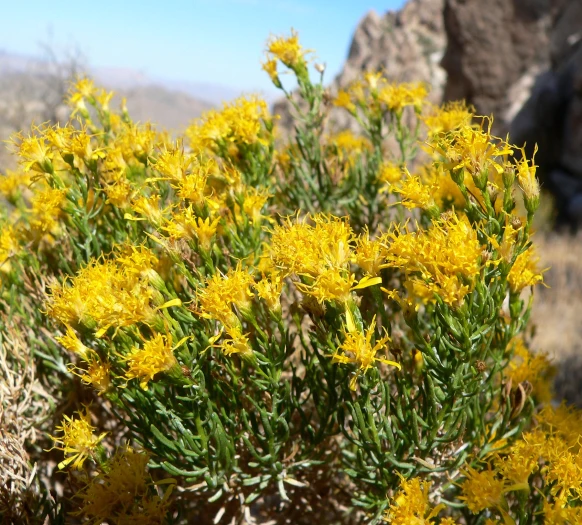Turpentine Bush
(Ericameria laricifolia)
Turpentine Bush (Ericameria laricifolia)
/
/

Stan Shebs
CC BY-SA 3.0
Image By:
Stan Shebs
Recorded By:
Copyright:
CC BY-SA 3.0
Copyright Notice:
Photo by: Stan Shebs | License Type: CC BY-SA 3.0 | License URL: https://creativecommons.org/licenses/by-sa/3.0 | Uploader: Stan Shebs | Publisher: Wikimedia Commons | Title: Ericameria_laricifolia_5.jpg | Notes: |






























































Estimated Native Range
Climate Requirements for Muskogee, Oklahoma
| This Plant | Your Site | Plant Suitability for Your Location | ||
|---|---|---|---|---|
| • Precipitation | 3" - 33" | 44" | Aquatic | Aquatic |
| • High Temp. | 67°F - 108°F | 93°F | Your summer temperatures are normal for this plant. | Excellent |
| • Low Temp. | 11°F - 47°F | 26°F | Your winter temperatures are normal for this plant | Excellent |
This plant may not grow well at your location - your precipitation is too high.
Summary
Ericameria laricifolia, commonly known as Turpentine Bush, is an evergreen shrub or subshrub native to arid regions such as deserts and scrublands, particularly in the Chihuahuan and Sonoran Deserts of the Western United States, Northern Mexico, and Baja California. It typically reaches a height of 50–100 cm (20-40 inches) and is characterized by its hairless, somewhat glandular, and aromatic nature. The plant’s many erect branches culminate in inflorescences of bright golden yellow flower heads, each with up to 16 long disc florets and as many as 6 ray florets, which bloom in the late summer to fall and are highly attractive to pollinators.
Turpentine Bush is valued for its drought tolerance, making it an excellent choice for xeriscaping and low-water-use gardens. Its bright yellow flowers add a splash of color to the landscape, and its aromatic foliage can be a sensory addition to the garden. It is often used in naturalistic plantings, rock gardens, and as a border shrub in areas with poor, rocky soils. For optimal growth, it requires full sun exposure, minimal water once established, and well-drained soils. While it is generally low-maintenance, it can be prone to root rot if overwatered or planted in poorly drained soils.CC BY-SA 4.0
Turpentine Bush is valued for its drought tolerance, making it an excellent choice for xeriscaping and low-water-use gardens. Its bright yellow flowers add a splash of color to the landscape, and its aromatic foliage can be a sensory addition to the garden. It is often used in naturalistic plantings, rock gardens, and as a border shrub in areas with poor, rocky soils. For optimal growth, it requires full sun exposure, minimal water once established, and well-drained soils. While it is generally low-maintenance, it can be prone to root rot if overwatered or planted in poorly drained soils.CC BY-SA 4.0
Plant Description
- Plant Type: Shrub, Subshrub
- Height: 1-3 feet
- Width: 1-3 feet
- Growth Rate: Slow
- Flower Color: Yellow
- Flowering Season: Fall, Summer
- Leaf Retention: Evergreen
Growth Requirements
- Sun: Full Sun
- Water: Low
- Drainage: Fast
Common Uses
Bee Garden, Bird Garden, Butterfly Garden, Drought Tolerant, Fragrant, Low Maintenance, Rock Garden, Showy Flowers, Street Planting
Natural Habitat
native to arid regions such as deserts and scrublands, particularly in the Chihuahuan and Sonoran Deserts of the Western United States, Northern Mexico, and Baja California
Other Names
Common Names: Turpentine-Brush, Ericameria, Turpentinebush
Scientific Names: Ericameria laricifolia, Haplopappus laricifolius, Bigelowia nelsonii, Chrysoma laricifolia, Aster laricifolius, Chrysocoma laricifolia, Ericameria nelsonii
GBIF Accepted Name: Ericameria laricifolia (A.Gray) Shinners